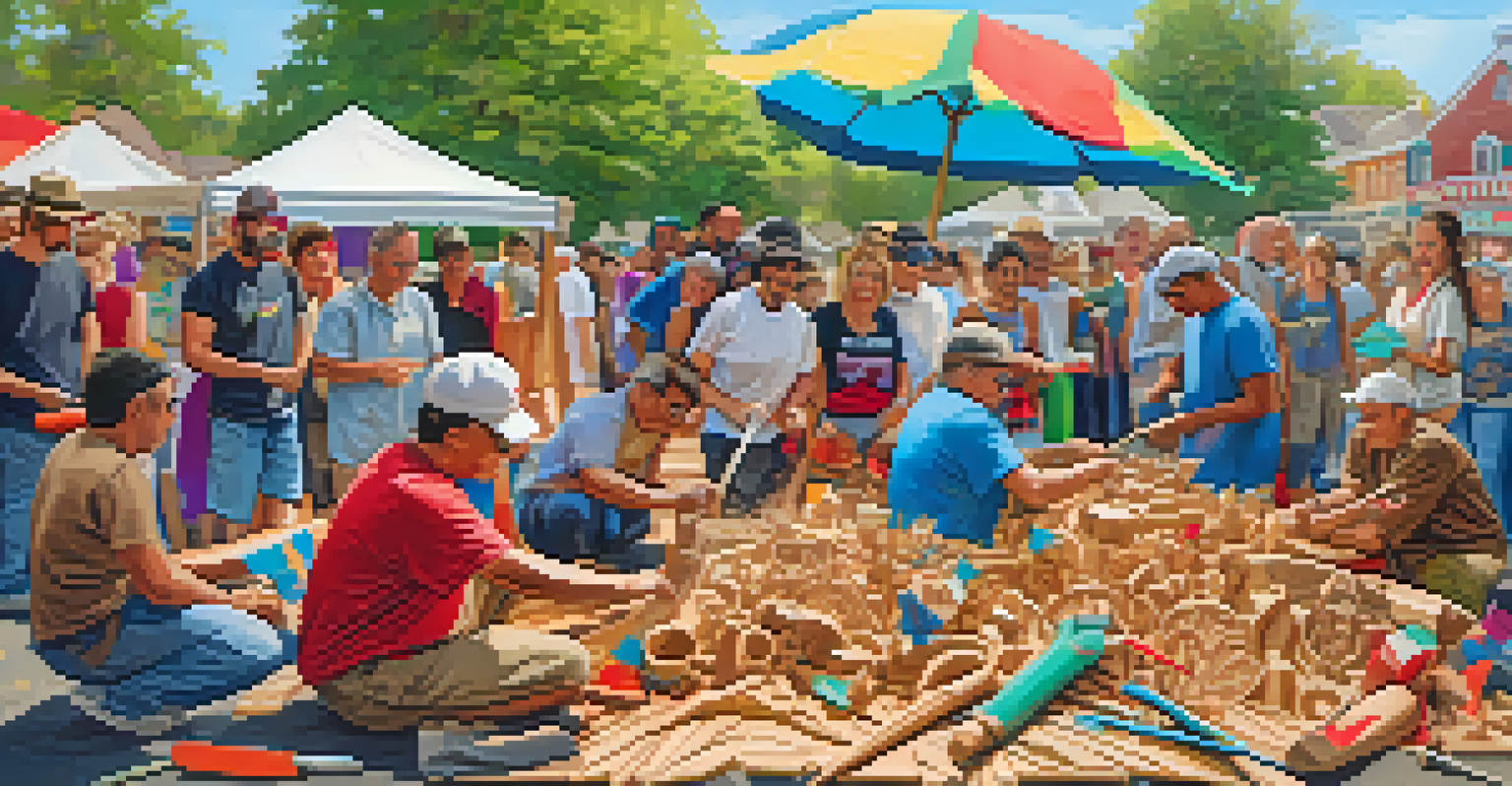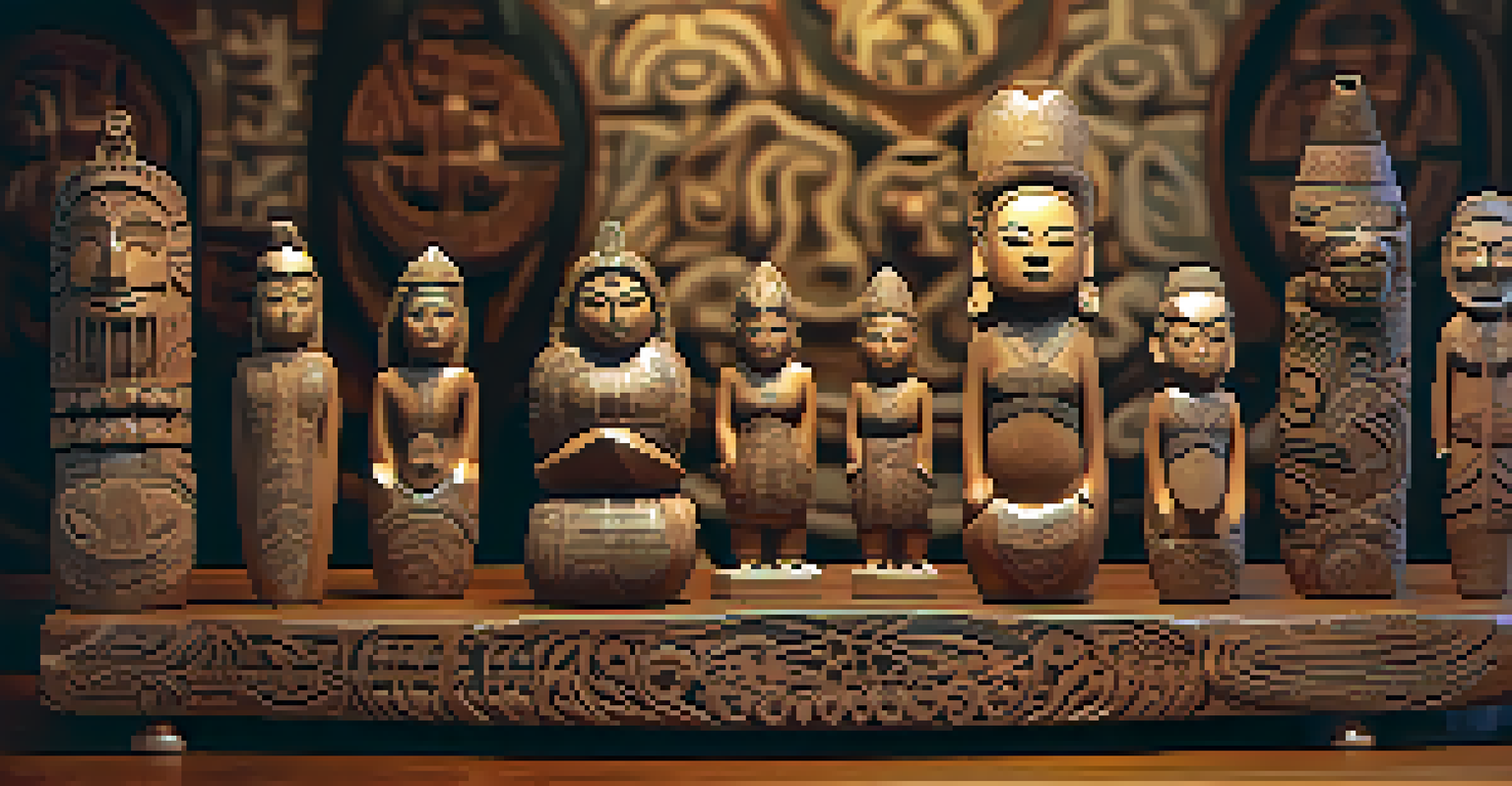The Role of Carving in Rituals and Cultural Practices

Understanding Carving as a Cultural Expression
Carving is more than just a craft; it's a deep cultural expression. For many communities, the act of carving gives voice to their history and beliefs. Each piece created often tells a story, embodying the values and traditions of the culture it represents.
Art is the most beautiful of all lies; it is a lie that tells the truth
Consider the intricate totem poles of Indigenous peoples, which depict ancestral stories and spiritual connections. These carvings serve as a bridge between generations, preserving important narratives and teachings through visual art.
In this way, carving resonates with the heart of cultural identity, reinforcing the idea that art can communicate complex ideas and emotions that words sometimes cannot.
The Spiritual Connection: Carving in Religious Rituals
Many religions incorporate carving into their rituals as a way to connect with the divine. Sacred symbols and images carved from wood, stone, or ivory are often used in ceremonies to invoke blessings or represent deities. This physical representation becomes a focal point for worship and reflection.

For example, in Hinduism, intricately carved idols of gods and goddesses are an essential part of temple worship. These figures are not merely decorative; they play a vital role in rituals, as devotees believe the divine essence resides within them during worship.
Carving as Cultural Expression
Carving serves as a profound cultural expression, preserving history and beliefs through artistic storytelling.
Thus, carving elevates the spiritual experience, transforming ordinary materials into sacred objects that facilitate a deeper connection between the worshipper and the divine.
Carving as a Tool for Community Cohesion
In many cultures, the act of carving is a communal activity that fosters social bonds. Groups come together to create intricate designs, sharing techniques and stories in the process. This collaborative effort strengthens relationships and reinforces a sense of belonging.
The artist is not a special kind of person; every person is a special kind of artist.
Take, for instance, the communal carving events held by various Native American tribes, where individuals work side by side to create a shared art piece. This not only produces beautiful artifacts but also cultivates a spirit of unity and cooperation among participants.
Through carving, communities can celebrate their heritage while also building connections that transcend generations, making it a powerful tool for social cohesion.
Carving in Festivals and Celebrations
Festivals often showcase carving as a central element of celebration, bringing communities together in joy and festivity. Carved items like masks, floats, and sculptures can transform gatherings into vibrant displays of cultural pride and artistic talent.
For example, the carvings featured in the annual Day of the Dead festivities in Mexico serve to honor deceased loved ones. Elaborate altars decorated with carved skulls and figures become focal points for remembrance and celebration of life.
Spiritual Connection in Carving
Many religions use carving in rituals, creating sacred objects that enhance the spiritual experience and connection to the divine.
These festive carvings not only beautify the event but also encapsulate the rich traditions and stories that define the community, making each celebration unique and meaningful.
Symbolism and Meaning: The Language of Carving
Carvings often carry profound symbolic meanings, making them a unique language of their own. Each design, shape, and figure can convey specific messages or beliefs, allowing artists to express complex ideas succinctly through their work.
For instance, the Maori people of New Zealand use carvings known as 'whakairo' to tell stories of their ancestry and genealogy. Each symbol is carefully chosen, conveying ancestral relationships and cultural narratives that are essential to their identity.
This symbolic language of carving enriches cultural practices, allowing for a deeper understanding of community values and beliefs through visual storytelling.
The Evolution of Carving Techniques Over Time
Carving techniques have evolved significantly over time, influenced by technological advancements and cultural exchanges. Traditional methods are often combined with modern tools, allowing for new styles and possibilities in the art of carving.
In many cultures, artisans have adapted their techniques to include contemporary materials such as acrylic and metal, while still honoring traditional designs and motifs. This blending of old and new creates a dynamic art form that can resonate with both historical and modern audiences.
Community and Social Bonds
Carving fosters community cohesion by bringing people together to collaborate, share techniques, and strengthen social bonds.
As carving techniques evolve, they continue to play an essential role in cultural practices, allowing for innovation while preserving the essence of tradition.
The Global Influence of Carving on Art and Culture
Carving is a universal practice found across the globe, influencing various art forms and cultural expressions. From African masks to Japanese netsuke, the diversity of carving styles showcases the creativity and ingenuity of different cultures.
These carved artifacts often inspire contemporary artists, who draw upon traditional techniques and themes to create new works that resonate with modern audiences. This global exchange enriches the art world, creating a tapestry of cultural influences.

Ultimately, carving serves as a powerful reminder of our shared human experience, transcending borders and connecting us through the stories and meanings embedded in each piece.